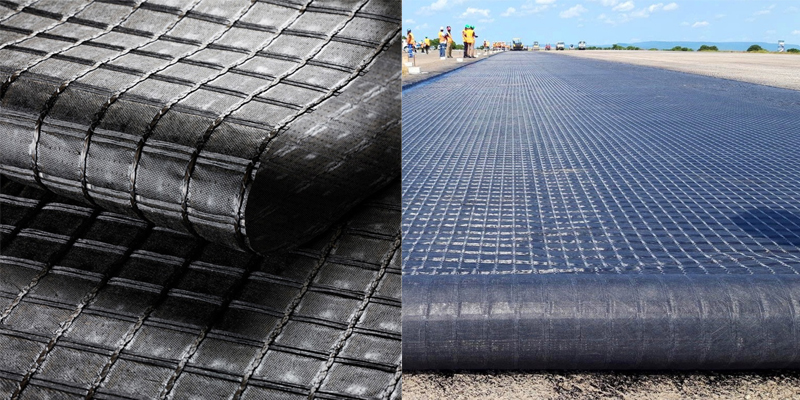Fiberglass geogrid composite geotextile is a material used in geotechnical engineering and civil construction applications to improve the performance and stability of soil structures. Let’s break down the components of this composite material:
- Fiberglass Geogrid:
- Material: Fiberglass geogrid is made from high-strength fiberglass filaments coated with a polymer (such as bitumen or PVC).
- Function: Geogrids provide reinforcement to soil structures by distributing loads and reducing the potential for soil movement. They enhance the tensile strength of soils and are commonly used in road construction, retaining walls, and other geotechnical applications.
- Geotextile:
- Material: Geotextiles are permeable fabrics, usually made from synthetic materials like polypropylene, polyester, or polyethylene.
- Function: Geotextiles serve various purposes, such as separation, filtration, drainage, and protection. They are used to prevent the mixing of different soil layers, allow water to pass through while preventing soil erosion, and protect geomembranes or other structures from damage.
Fiberglass Geogrid Composite Geotextile:
Combination: The term “fiberglass geogrid composite geotextile” suggests a material that combines the reinforcing properties of fiberglass geogrid with the filtration and separation functions of geotextile.
Applications: This composite material is likely used in situations where both reinforcement and separation functions are needed. For example, it could be employed in road construction over soft or unstable soils, where the geogrid provides reinforcement to the subgrade, and the geotextile prevents mixing of different soil layers.

Overall, the use of a composite material like fiberglass geogrid combined with geotextile can offer a synergistic solution to address multiple engineering challenges in soil stabilization and construction projects. It’s important to note that specific applications and product specifications may vary based on the manufacturer and project requirements.
